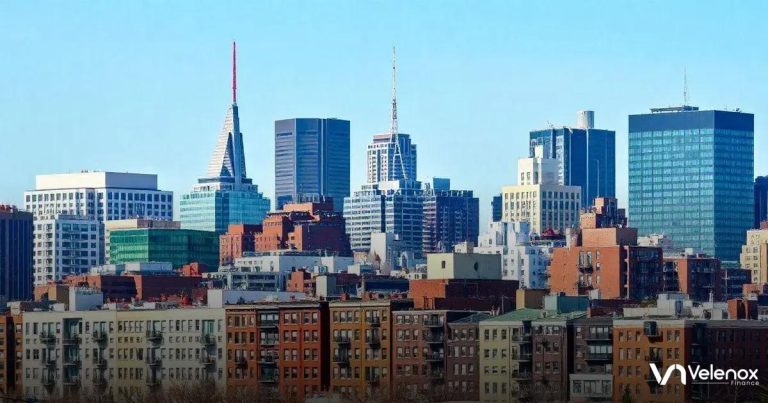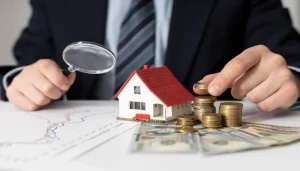Investing in Brooklyn Real Estate offers exciting opportunities for investors. With its diverse neighborhoods and growing demand, it’s a market full of potential.
From trendy spots to up-and-coming areas, Brooklyn has something for everyone. Whether you’re eyeing a condo or a classic brownstone, there’s room for smart investments.
Curious about the latest trends and tips? Let’s explore how to make the most of Brooklyn’s real estate market!
Understanding the Brooklyn Real Estate Market
Understanding the Brooklyn real estate market is crucial for anyone considering investing in this vibrant area. Brooklyn has transformed over the years, making it a hotspot for real estate investment. With its unique neighborhoods and cultural diversity, Brooklyn offers a variety of opportunities for both new and seasoned investors.
ADVERTISEMENT
Market Trends
The Brooklyn real estate market has seen a surge in property values due to increased demand. Factors contributing to this trend include an influx of people moving from Manhattan, which drives up prices for rentals and sales. Monitoring these trends is vital for making informed investment decisions.
Neighborhood Dynamics
Each neighborhood in Brooklyn has its own character and price points. Areas like Williamsburg and DUMBO are known for their chic apartments and high demand, while East New York and Brownsville may offer more affordable options but are experiencing development opportunities. Identifying the right neighborhood can significantly impact your investment returns.
Diverse Property Types
Investors can explore different types of properties in Brooklyn, such as single-family homes, multi-family units, and commercial spaces. Each property type caters to different market segments and offers various revenue potentials. Conducting thorough research on each property’s potential can lead to successful investments.
Community Development
Brooklyn’s ongoing community development initiatives are enhancing living conditions and increasing property values. Parks, schools, and public transportation improvements are just a few of the factors that attract new residents. Keeping an eye on local government plans can provide insight into future market shifts.
Rental Market Insights
The rental market in Brooklyn remains robust, with many people opting to rent rather than buy. Understanding local rental demand and tenant needs can position investors to take advantage of this trend. Properties that appeal to a younger demographic, such as those offering modern amenities, often see quicker leasing times.
Economic Drivers
Brooklyn’s economy is diverse, with strong sectors like technology, education, and healthcare contributing to job growth. A thriving economy often leads to increased interest in real estate, making it a lucrative area for investment. Staying informed about local economic developments is key.
Future Prospects
The future of the Brooklyn real estate market appears promising, with continued growth expected. Investors who remain adaptable and informed about emerging trends will be better positioned to capitalize on the opportunities. Analyzing the market regularly ensures that you stay ahead of changes.
Key Areas for Investment
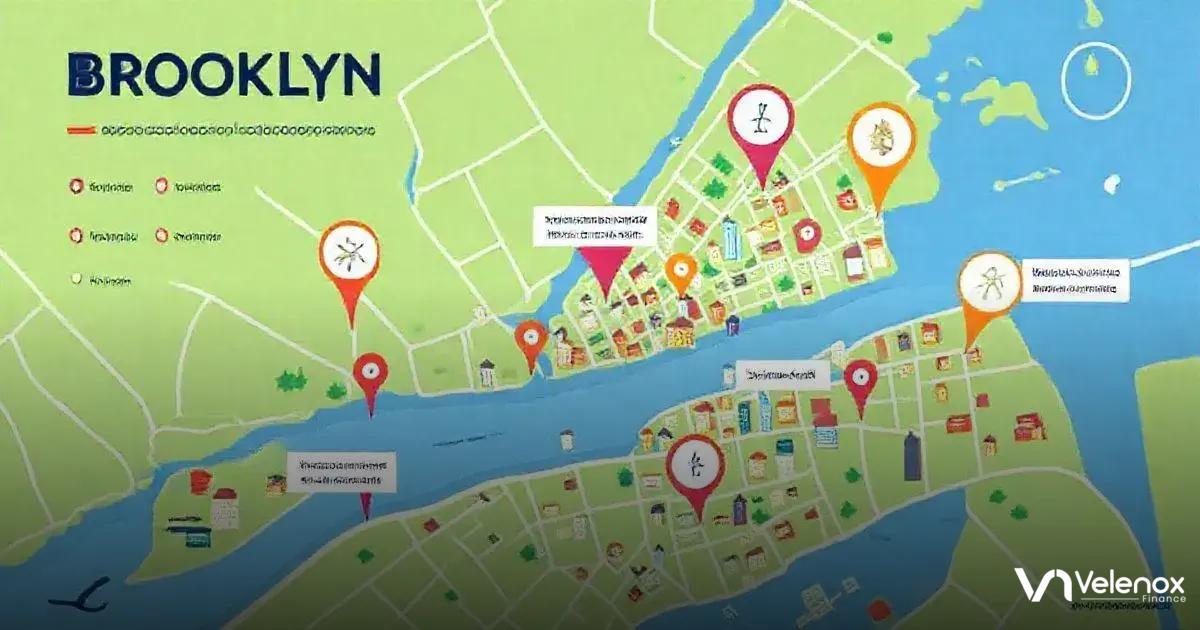
When considering key areas for investment in Brooklyn, it’s important to identify neighborhoods that show promise for growth and stability. Here are some of the top areas where smart investors can focus their attention:
1. Williamsburg
Williamsburg has become a popular hub for young professionals and artists. With waterfront views and a vibrant nightlife, it continues to attract new residents. The area’s property values have been on the rise, providing good investment returns.
2. DUMBO
DUMBO, which stands for Down Under the Manhattan Bridge Overpass, is known for its stunning views of Manhattan and its thriving arts scene. The demand for real estate in this area has been high, making it a prime location for investment.
3. Bushwick
Bushwick is known for its artistic community and is becoming increasingly popular among creative types. With lower property prices compared to its neighbors, it offers significant potential for appreciation as development continues.
4. Bed-Stuy
Bedford-Stuyvesant, commonly called Bed-Stuy, has a rich culture and beautiful brownstones. It’s experiencing revitalization and drawing in new residents, making it an attractive option for real estate investment.
5. East Williamsburg
Just east of Williamsburg, East Williamsburg is emerging as a neighborhood to watch. With a mix of residential and commercial properties, it provides various investment opportunities as new businesses move in.
6. Crown Heights
Crown Heights is noted for its cultural diversity and historic architecture. The ongoing development and increased amenities add value to this neighborhood, qualifying it as a key area for smart investors.
7. Fort Greene
With its historic district and proximity to cultural institutions like the Brooklyn Academy of Music, Fort Greene is a desirable area. It remains a resilient market, making real estate investment here a wise choice.
8. Park Slope
Park Slope is famous for its family-friendly environment and excellent schools. Its consistent demand for housing makes it one of the top neighborhoods for long-term real estate investment.
Tips for First-Time Investors in Brooklyn
For first-time investors in Brooklyn, navigating the real estate market can be overwhelming. Here are some essential tips for success that will help you make informed decisions:
1. Research Thoroughly
Before investing, take the time to research Brooklyn’s various neighborhoods. Understand the market trends, property values, and rental demands. Websites like Zillow or local real estate agencies can provide valuable insights.
2. Set a Budget
Determine how much you can afford to invest. This includes not just the purchase price, but also closing costs, repairs, and maintenance. Sticking to your budget can prevent financial strain.
3. Focus on Cash Flow
When purchasing an investment property, prioritize cash flow. Look for properties that can provide positive cash flow from rental income. This ensures that your investment remains profitable over time.
4. Work with Local Experts
Consider hiring a local real estate agent who knows the Brooklyn market well. An experienced agent can help you find the right property and negotiate effectively.
5. Understand Financing Options
Familiarize yourself with different financing options available to you. Explore conventional loans, FHA loans, or even investment property mortgages to find the best fit for your situation.
6. Inspect Properties
Always conduct a thorough inspection of any property before purchasing. This helps identify potential issues that may require costly repairs in the future. A home inspector can provide a professional evaluation.
7. Stay Updated on Regulations
Real estate laws and regulations can change quickly. Stay informed about local zoning laws, rental regulations, and any upcoming development projects that may affect property values. Doing so will help you avoid legal troubles and capitalize on new opportunities.
8. Network with Other Investors
Connecting with other investors can provide valuable knowledge and support. Attend local real estate meetups or join online forums to share experiences and strategies.
Financing Options for Brooklyn Properties

Understanding the various financing options for Brooklyn properties is essential for making smart investment decisions. Here are some common options available to investors:
1. Conventional Loans
Conventional loans are a popular choice for many investors. These are not backed by the government, and lenders often require a 20% down payment. Good credit is typically necessary to secure favorable interest rates.
2. FHA Loans
The Federal Housing Administration (FHA) offers loans that are suitable for first-time homebuyers. These loans require a lower down payment, usually around 3.5%, making it easier for many to enter the market.
3. VA Loans
Veterans can take advantage of VA loans, which allow for 0% down payment and do not require private mortgage insurance (PMI). This makes them an excellent option for qualified service members looking to Investing in Brooklyn Real Estate.
4. Portfolio Loans
Portfolio loans are offered by lenders that keep the loans in their portfolio instead of selling them on the secondary market. This can allow more flexibility in terms and conditions, making them appealing for investors with unique situations.
5. Hard Money Loans
Hard money loans are short-term financing options offered by private lenders. These loans are based on the property’s value rather than the borrower’s credit score. They can be useful for investors looking to quickly purchase properties that need renovation.
6. Home Equity Loans
If you already own a home, you can tap into your equity through a home equity loan. This allows you to borrow against the value of your home to finance another property investment.
7. Cash Purchases
Investors with enough capital can choose to buy properties outright with cash. This can simplify the buying process and give you a competitive edge in a crowded market.
8. Alternative Financing
Many investors are exploring alternative financing options like crowdfunding or peer-to-peer lending. These can provide quick and flexible funding solutions but may come with higher risks.
Rental Market Trends in Brooklyn
The rental market trends in Brooklyn are crucial for anyone considering investment in the area. The Brooklyn rental market has shown significant changes over the past few years, driven by various factors that impact supply and demand.
1. Increasing Rental Prices
Rental prices in Brooklyn have been steadily increasing, especially in popular neighborhoods like Williamsburg and Dumbo. Many renters are willing to pay a premium for modern amenities and proximity to transportation.
2. High Demand for Rentals
There is a strong demand for rental properties, particularly among young professionals and families who prefer the urban lifestyle without the high costs associated with Manhattan. This demand supports rental price stability.
3. Shift Toward Flexibility
More renters are seeking flexible lease terms. This trend has emerged due to changes in work habits, such as remote work. Landlords who offer flexible leasing options can attract more tenants.
4. Gentrification Impact
Gentrification in certain Brooklyn neighborhoods has caused a shift in the demographics of the rental market. As newer, wealthier residents move in, rental prices rise, affecting longtime residents and their affordability.
5. Increase in Luxury Rentals
The construction of luxury rental buildings is on the rise. These properties often feature high-end amenities such as gyms, rooftop terraces, and concierge services. They are appealing to affluent renters seeking an upscale living experience.
6. Growing Interest in Smaller Units
Smaller rental units, like studios and one-bedrooms, are in high demand as young renters look to live alone or share spaces with roommates. This trend reflects changing priorities regarding space and affordability.
7. Rental Market Regulations
New regulations regarding rent control and tenant protections can impact the rental landscape. Investors should stay informed about current laws that could affect the profitability of their rental properties.
8. Sustainability Preference
Many renters are becoming more environmentally conscious and prefer properties that offer green features. Buildings with energy-efficient appliances and eco-friendly materials can attract this growing demographic.
Impact of Gentrification on Real Estate
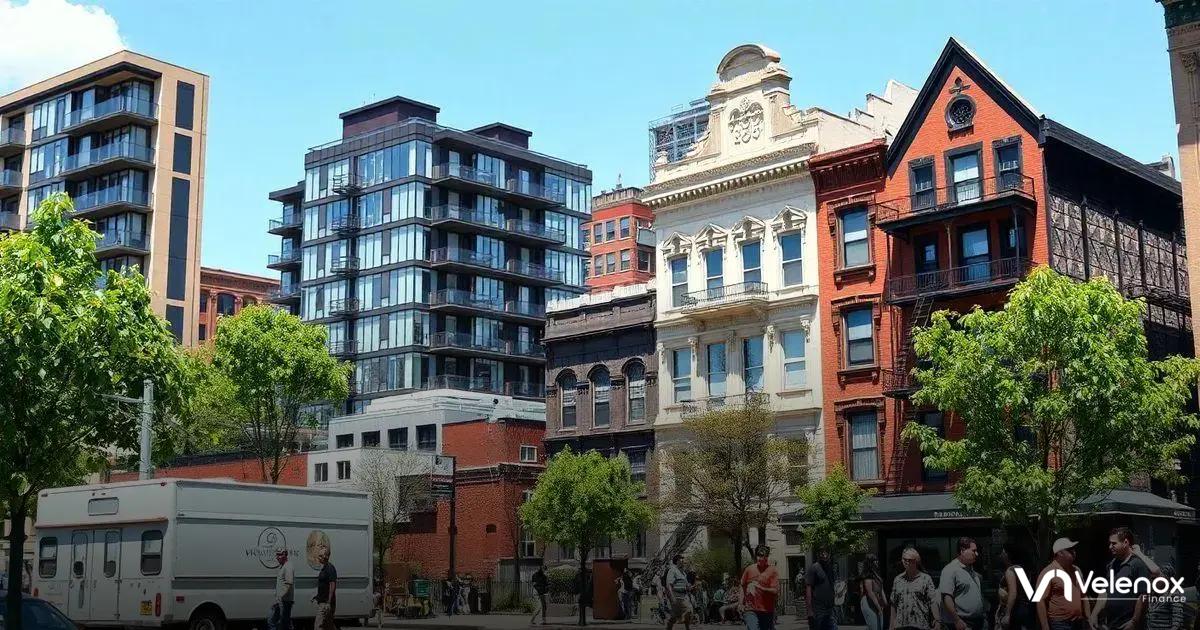
The impact of gentrification on real estate in Brooklyn has been profound, bringing both opportunities and challenges for investors and residents alike. As neighborhoods undergo change, the dynamics of the real estate market often shift in significant ways.
1. Rising Property Values
Gentrification often leads to increased property values as wealthier individuals move into neighborhoods. This can yield high returns for real estate investors but may also price out long-term residents.
2. Changes in Demographics
As more affluent families and professionals relocate to gentrifying areas, the demographic landscape changes. This shift can alter the culture and social fabric of neighborhoods, which can be both enriching and displacing for current residents.
3. Renovation and New Construction
Gentrification typically sparks renovation projects, with investors updating older buildings and constructing new ones. This can enhance neighborhood appeal but may also contribute to displacement of current residents due to rising rents.
4. Increased Economic Activity
Gentrified neighborhoods often experience economic revitalization. New businesses, restaurants, and shops can invigorate the local economy, creating jobs and improving services, which can benefit both new and old residents.
5. Strain on Local Resources
With an influx of new residents, local resources such as schools, hospitals, and public services may face strain. This can lead to competition for these services, impacting existing residents negatively.
6. Rise in Rental Prices
As a neighborhood gentrifies, rental prices typically increase, often making it unaffordable for longtime renters. This change highlights the importance of monitoring rental trends and making informed decisions as an investor.
7. Community Resistance
Gentrification can lead to community pushback from those who feel threatened by the changes. Residents may advocate for policies that protect affordable housing and maintain the character of the neighborhood.
8. Legal and Ethical Considerations
For investors, it’s essential to consider the ethical implications of gentrification. Engaging with community stakeholders, understanding local housing needs, and promoting inclusive development can lead to more sustainable investment strategies.
Legal Considerations for Real Estate Investors
Investors in the Brooklyn real estate market should be aware of several important legal considerations that can impact their investments. Understanding these legal aspects can help you navigate the complexities of property ownership and management.
1. Zoning Laws
Familiarize yourself with local zoning regulations, as they dictate how properties can be used. Different zones may have restrictions on residential, commercial, or mixed-use development, which can affect your investment plans.
2. Building Codes
Compliance with building codes is crucial for any renovation or construction project. These codes ensure safety and structural integrity, and failure to comply can result in fines or forced renovations.
3. Lease Agreements
When renting out property, having a legally sound lease agreement is vital. This document should outline all terms, including rent, deposits, maintenance responsibilities, and termination procedures to protect both landlords and tenants.
4. Tenant Rights
Understand tenant rights under local and state law. Regulations regarding security deposits, eviction processes, and maintenance obligations are essential for maintaining compliant leasing practices.
5. Fair Housing Laws
Be aware of fair housing laws that prohibit discrimination based on race, gender, disability, and other factors. Violating these laws can lead to serious legal repercussions, including fines and lawsuits.
6. Property Taxes
Real estate investors must adhere to property tax regulations. Understanding how taxes are assessed and staying current on payments can help avoid penalties and ensure smooth property operations.
7. Environmental Regulations
If a property has environmental concerns, such as lead paint or asbestos, it’s essential to follow proper regulations for remediation. Ignoring these issues can lead to legal liabilities and health risks for tenants.
8. Insurance Requirements
Investors should also consider the legal aspects of property insurance. Adequate coverage can protect against unforeseen events such as natural disasters, theft, or liability claims, ensuring financial stability for your investment.
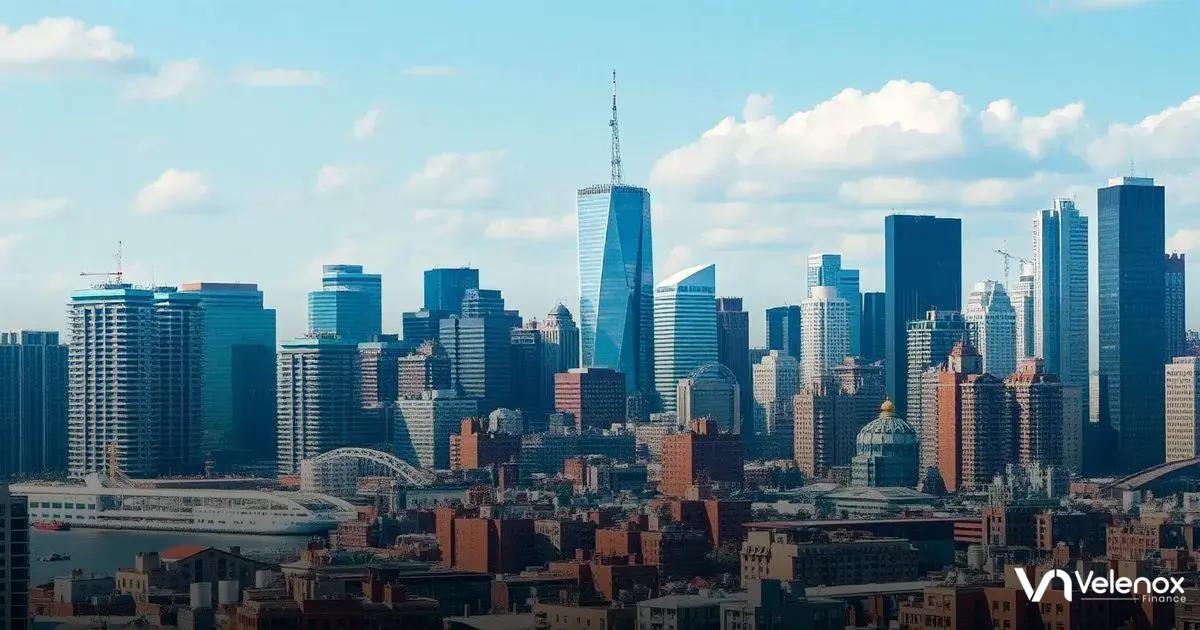
Investing in Brooklyn Real Estate: A Path to Profitability
Investing in Brooklyn real estate offers a unique opportunity for both seasoned investors and newcomers alike. The areas discussed, from understanding market trends to navigating legal considerations, provide essential insights for making informed decisions.
As the future outlook suggests sustained growth in property values, along with developments in technology and construction, the potential for profitability remains strong. It is crucial to stay updated on neighborhood dynamics and economic changes that impact the real estate landscape.
Ultimately, with careful planning, thorough research, and an understanding of the evolving market, you can unlock the secrets to successful investing in Brooklyn real estate.

